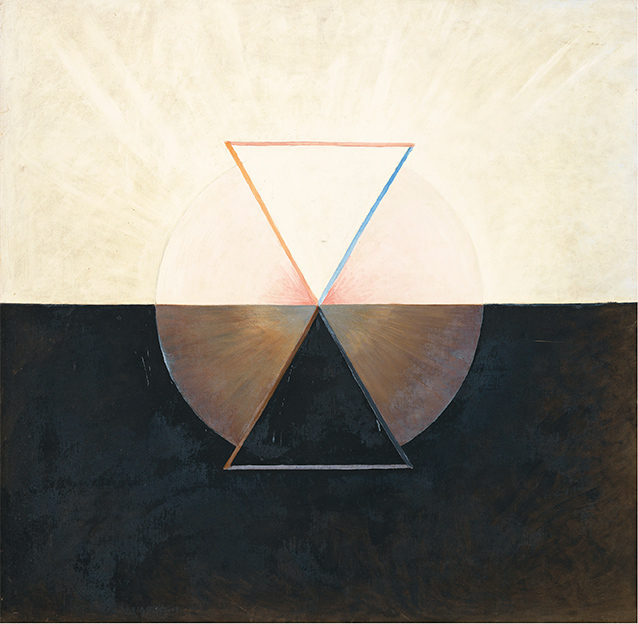The Swan (1915)
Gallery 208
In 1908, Hilma af Klint took a break from her Paintings for the Temple. During that time, she had to change studios, and her mother lost her sight and required care. When af Klint resumed the cycle in 1912, she stated that the spirits were still guiding her, but not the same way as before; she had more agency in the choice of colors and composition, thus taking a more direct role in the production of her paintings.
The Swan clearly reflects this evolution in the forms—which start as figurative and become increasingly abstract and geometric until the very last painting that revisits figuration—and the color palette, which was initially limited to black and white with subtle hints of yellow and blue, conveying the dualities of male and female, light and dark, life and death.
According to Helena Blavatsky, the founder of Theosophy, this majestic animal embodies the grandeur of the spirit, while in alchemy the swan symbolizes the union of opposites needed for the quest for and discovery of the philosopher’s stone. Af Klint integrates these meanings with her own unique interpretations of the theme, which had appeared in previous works.
After she finished the Paintings for the Temple, in 1915 af Klint wrote that, “where war has torn up plants and killed animals there are empty spaces which could be filled with new figures, if there were sufficient faith in human imagination and the human capacity to develop higher forms.”

